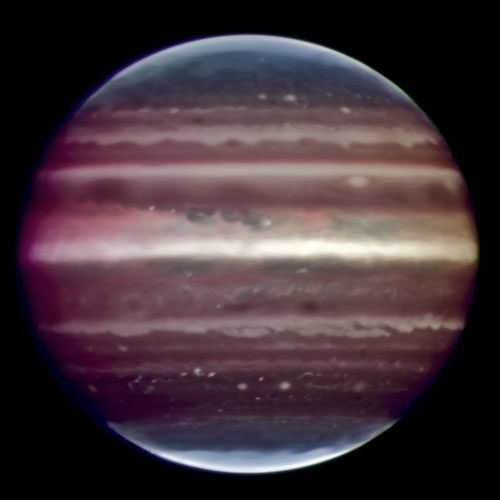|
Author
|
Topic: ESO's VLT produces highest ground based resolution images of Jupter to date
|
LCDR Scott Schneeweis
New Member Posts:
From:
Registered:
|
 posted 10-09-2008 12:08 PM
posted 10-09-2008 12:08 PM
   
Stunning images (including a movie) of Jupiter courtesy of new adaptive optics technology. Who says we still need HST? ------------------
Scott Schneeweis
http://www.SPACEAHOLIC.com/ |
Robert Pearlman
Editor Posts: 42981
From: Houston, TX
Registered: Nov 1999
|
 posted 10-09-2008 12:25 PM
posted 10-09-2008 12:25 PM
   
quote:
Originally posted by LCDR Scott Schneeweis:
Who says we still need HST?
Well, let's compare... Europe's VLT Jupiter (as linked):
Hubble Space Telescope's Jupiter following "Red Spot Jr." taken with the Wide Field Planetary Camera 2 (WFPC2):  And we can only imagine (for now) what will be possible with WFPC3 launching on STS-125... |
Philip
Member Posts: 5952
From: Brussels, Belgium
Registered: Jan 2001
|
 posted 10-09-2008 12:40 PM
posted 10-09-2008 12:40 PM
   
Don't want to start a discussion here but Adaptive Optics enables ground-based large mirrors to do better than whatever Space Telescope looking in the Optical/IR.Putting JWST at the L2 lagrange point will enable more observation time as Earth and the moon are no longer in the field-of-view. |
LCDR Scott Schneeweis
New Member Posts:
From:
Registered:
|
 posted 10-09-2008 06:50 PM
posted 10-09-2008 06:50 PM
   
Apples to oranges. Europe's VLT image was taken in Infrared, HST in the Visible.AO equipped ground based telescopes have attained sub 10 milli-arc second per pixel performance - better then Hubble. WFC3 (note the "P" for planetary is absent) will have slightly marginally improved resolution to that of WF/PC2, the big difference is that WFC3 will have a wider field of view (using larger chips) in both the UVis and NIR.... Compare this image of Uranus taken by HST NICMOS (in infrared):  with a separate IR image taken by the Keck Observatory, AO enabled:  In the visible compare this Hubble WF/PC2 image of Uranus:  with the following image taken by Keck, AO enabled: 
|
cspg
Member Posts: 6210
From: Geneva, Switzerland
Registered: May 2006
|
 posted 10-09-2008 11:45 PM
posted 10-09-2008 11:45 PM
   
quote:
Originally posted by LCDR Scott Schneeweis:
Who says we still need HST?
HST will be useful until adaptive optics and interferometry (grouping of the four VLT telescopes) will be in full swing. And then of course, when we'll get 30-meter (or more) telescopes (Keck style).Chris. |

















